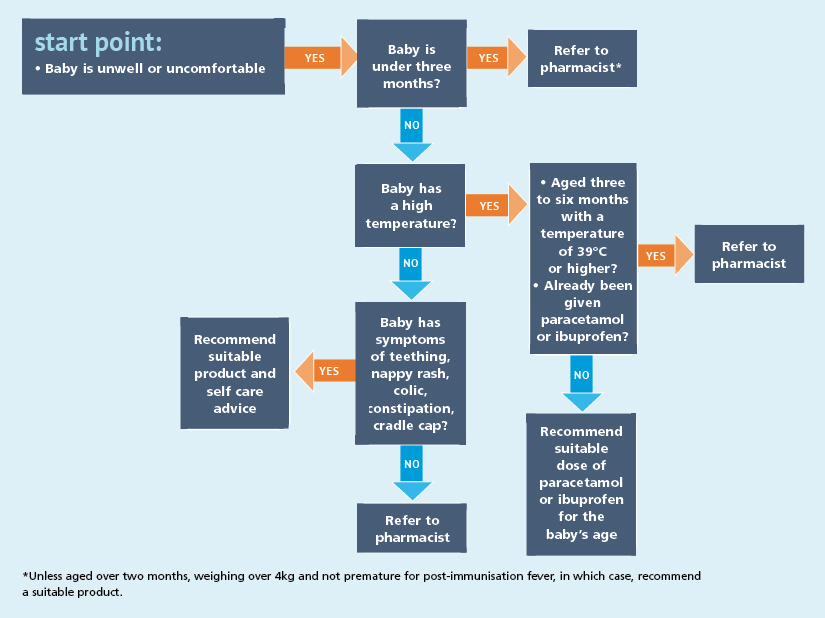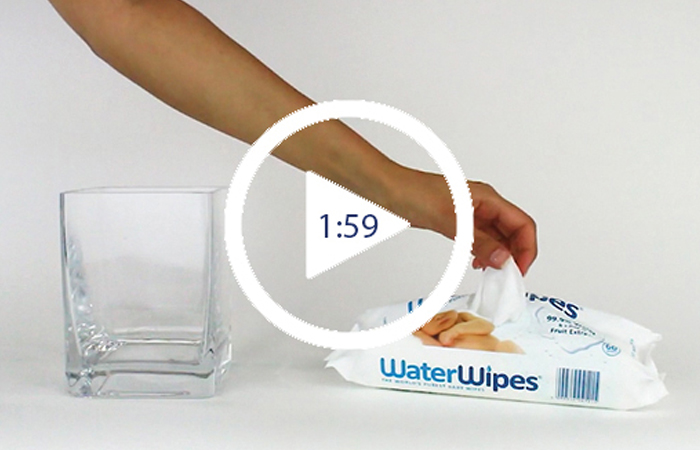10 minute clinic: baby care
Record learning outcomes
This handy 10-minute clinic is designed to act as a quick reference guide that will help you when advising customers on the baby care category. The flowchart below will lead you through the decision-making process to help you respond to customer queries

At a glance

Whenever you talk to any customer, remember WWHAM:
Who is it for?
You will need to find out the age of the child.
What are the symptoms?
Ask the customer to describe all of the child’s symptoms.
How long have the symptoms been present?
This will help you determine whether the child has a minor condition
or something potentially more serious.
Action already taken?
This will establish whether the customer has already given their child
a product that hasn’t helped or wasn’t suitable.
Medication?
It is important to find out if the child is taking any form of medication.
You don’t have to ask these questions in order, and a customer might give you some of this information anyway. As long as you cover them in the conversation, you should be able to find out the information you need in order to make a recommendation. The golden rule to remember is: if in doubt, refer to the pharmacist. Don’t be embarrassed to ask for their advice.
Self care tips
When a child is suffering from a fever, parents should be advised to:
• Encourage the child to drink fluids. If the child is breastfed, the most appropriate fluid is breast milk
• Check for signs of dehydration (e.g. dry mouth, sunken eyes, absence of tears, poor overall appearance) and seek further advice if these are present
• Check the child during the night.
When to refer to the pharmacist
- All babies with a fever
- All children under three months old (unless post-immunisation)
- If the child’s temperature is high for longer than 24 hours or rises above 39°C despite treatment
- If the child has a febrile convulsion, has had one in the past or if there is a family history of them
- If there are symptoms such as a stiff neck, vomiting, a dislike of light or a rash on the skin – these could be signs of meningitis
- If symptoms do not improve despite treatment
- If colic-like symptoms continue after a child is four to five months old
- If a colicky baby is failing to thrive or if there is vomiting or diarrhoea.
Signposting
- The NHS
- Family Lives: 0808 800 2222
- Cry-sis: 08451 228 669
Press play on your learning!
Brush up on your knowledge of baby skincare with our two-minute learning video.

